Move over Tesla. The Lightyear One will be a solar-powered electric vehicle that can drive 440 miles on a single charge.
I missed the Dutch company when I visited CES 2020, the big tech trade show in Las Vegas earlier this month. But the team was kind enough to transport the car to my house in Silicon Valley, where I got to sit in the prototype.
We couldn’t drive it because the Helmond, Netherlands-based Lightyear team doesn’t yet have permits to drive the car on U.S. streets. But the solar-powered family car made me feel like I was stepping into a futuristic vehicle at Disney’s Epcot Center in Florida.
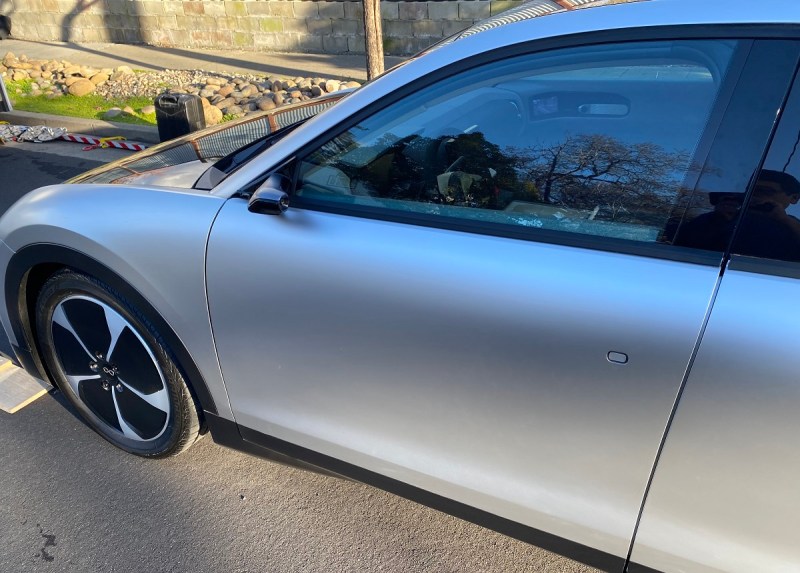
Above: You press a small button to open a door on the Lightyear One.
Solar-powered cars seem like fantasy because even electric car companies like Tesla aren’t building them yet. But Lightyear’s founders are optimistic that these cars can match what gas-powered and electric vehicles can do.
June 5th: The AI Audit in NYC
Join us next week in NYC to engage with top executive leaders, delving into strategies for auditing AI models to ensure fairness, optimal performance, and ethical compliance across diverse organizations. Secure your attendance for this exclusive invite-only event.
And change is happening. Bloomberg NEF reported that it took around five years to sell the first million electric cars and just a year and a half to shift the second million. After the 3 million milestone, it took only six months to pass 4 million electric vehicles sold at the end of 2018.
Perhaps the coolest thing about the car is the fact that the solar tiles cover the whole vehicle, from front to back, across a curved roof. But the scariest thing is that the tiles also cover the space where you would normally have a back window.
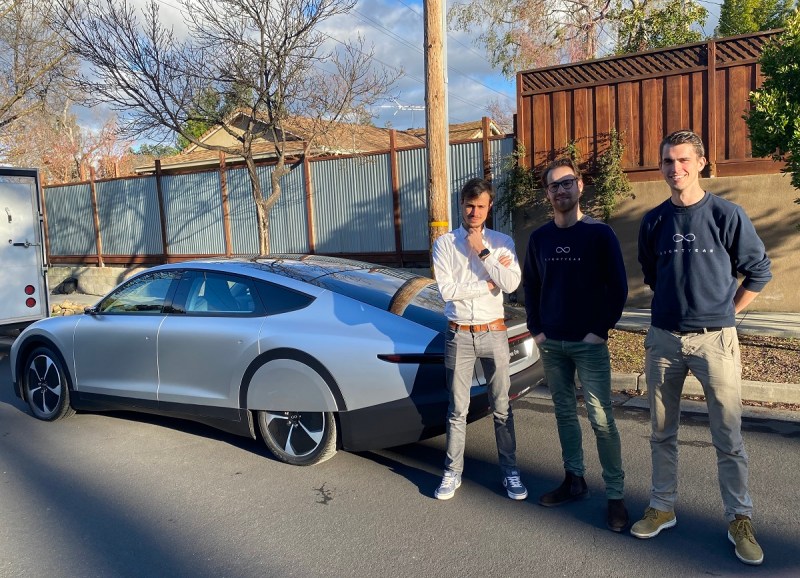
Above: Lightyear’s team members (left to right): Lex Hoefsloot (CEO), Jaap van de Vorst, and Bart Kramer
Lightyear chief technology officer Arjo van der Ham said in an interview with VentureBeat that this is nothing to worry about. I was looking at him skeptically as he said that.
He said you can actually see behind your car with two side mirror cameras that show up on displays near your door handles. The company will also install a center rearview mirror with a camera view of what is behind your car. The cameras can use artificial intelligence to recognize risks, such as a car coming into your blind spot, and give you visual alerts.
The details
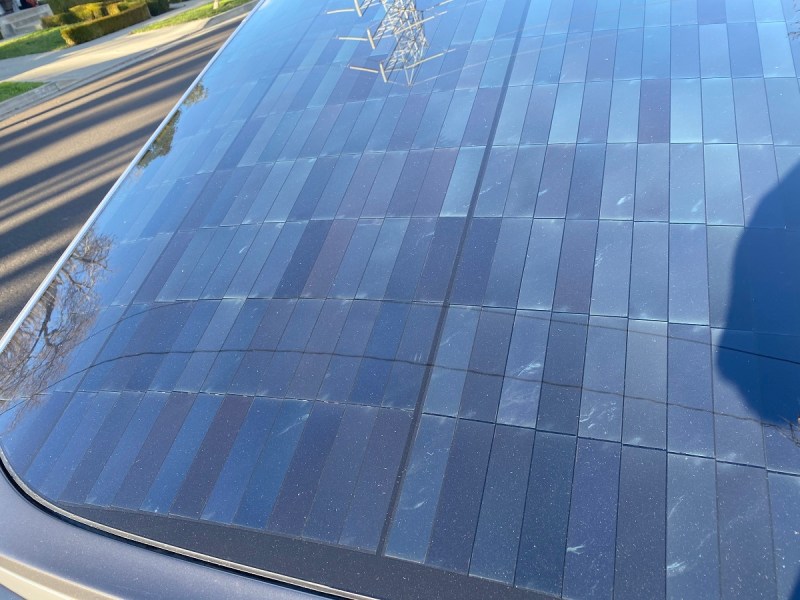
Above: There are 1,000 rectangular solar tiles on the Lightyear One.
Lightyear CEO and cofounder Lex Hoefsloot, said in an interview said the car’s electronics have all been moved to the front of the vehicle. But the car actually has four engines, one for each wheel.
“That means it can react very quickly to changes in driving, and with no motor in the middle, we can improve the aerodynamics of the car,” Hoefsloot said.
Across the whole car are 1,000 small solar tiles that soak up the sun and convert it to electricity. They are smaller than the tiles on a house roof, as they need to follow the curved roof for the car, said Hoefsloot. The tiles have a slight color variations, so you can tell they are tiles up close. But from a distance, it looks like you have an all-black stripe on the car.
The car can fit about five adults in the seats and luggage in the trunk, adding up to 780 liters — a pretty sizable space. The car has a 60-kilotwatt-hour battery and charges at a rate of 12 kilometers per hour, but it can also use electric vehicle charging stations, which provide an up to 507-kilometer range within an hour.
“We are building it for endurance and comfort,” said Hoefsloot. “It’s the first electric car you can really drive without a lot of charging. It’s not necessarily built for zero to 60 miles per hour speed.”
Still, the car can go 100 miles per hour, and it goes from zero to 60 in eight seconds.
During a four-hour drive, the Lightyear One should accumulate nearly 50 kilometers’ worth of extra travel time from the solar charging. The chassis is made out of aluminum for added lightness.
The company plans to make about 946 of these initial cars in the Netherlands starting in 2021, and it will then progress to larger volumes, working with a contract manufacturer in Europe.
Interior design
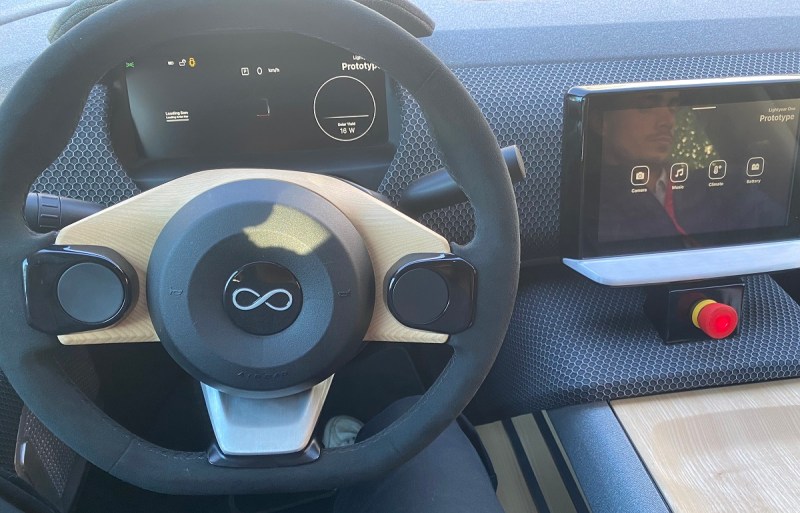
Above: The interior of the Lightyear One is pretty sparse for now.
To open the door, you just press a button on the side of the car.
Inside, there’s a big red button in the middle of the dash area, but that’s a safety stop feature that won’t be needed in later versions. The car will have a couple of display screens for the dashboard and infotainment display.
“This prototype covers the bare minimum functions for now,” Hoefsloot said.
The heat is evenly absorbed by the tiles, and the car has insulation, so you won’t have to worry about the solar cells producing too much heat, he said.
He added that the car is fairly long, which offers good crash protection for passengers. The inside needs some work, but the company will be redesigning that in the future.
Origins
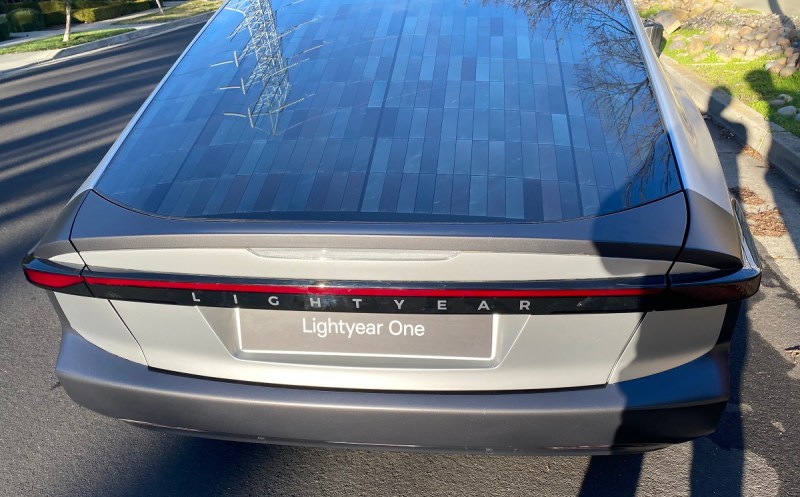
Above: The Lightyear One has curved surfaces for its solar tiles.
The team of five founders got started in 2016, and this demo car is the first that they are starting to show. Van der Ham said the team got into electric car racing in 2012, and they started working on the tech while at the Eindhoven University of Technology. They participated in the World Solar Race in Australia with an early prototype.
“After that, we took our student-built car around the world,” Van der Ham said. “People started asking us when they could buy it. By 2015, we were almost graduated, and so we started the company. We want to do something for the environment. We want to make this world a better place.”
They looked at the possibilities and noted that electric cars weren’t really sustainable yet because they still had to draw electricity from the grid, which is a kind of “gray technology,” in that it isn’t really sustainable.
The solar advantage

Above: Each tire has its own engine in the Lightyear One.
One of the reasons solar cars are more sustainable is their efficiency. You can get rid of the gas tank and redesign the engine (or engines in this case) so they are smaller and take up less space, which in turn gives the car more range on a battery charge.
“If you make a relatively small battery for a shorter range, then the costs can go down,” he said. “Smaller batteries are still about a third of the bill of materials and in high volume. The charging hassle becomes a little better. If I have a more efficient car, if I can drive more miles with the same amount of energy than if I charge at the same charging spot, I’m actually charging faster in terms of miles per hour. So this car is about twice as efficient as a Tesla, for example.”
He added, “If you are at the same charging station, you charge twice as far, not because of supercharging but because the car uses less energy.”
If you charge the car at your home, you can put it inside the garage and charge it using your wall charger. But outside, it can charge overnight. In a year, the solar charging can get you about 8,000 miles of no-cost driving.
Solar challenges
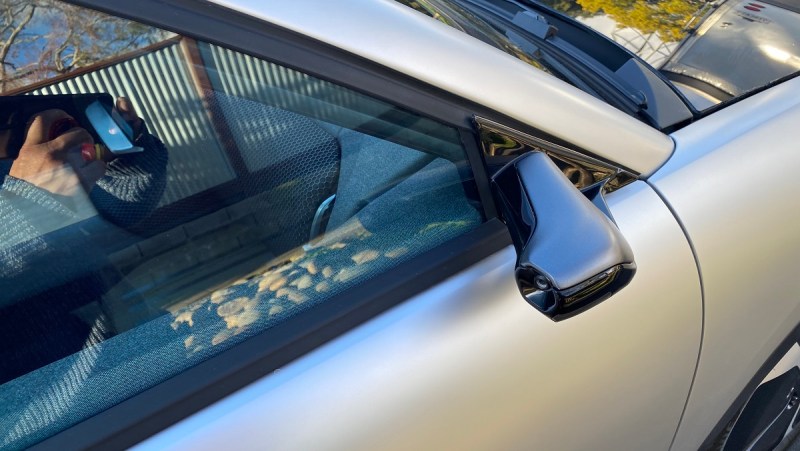
Above: Cameras will help you see behind the Lightyear One.
It’s hard to get enough solar cells on the car to enable sufficient charging.
“What has been super difficult is having a large surface area of solar cells, making the car very aerodynamic, but also giving people comfortable seating,” Hoefsloot said.
The car has a deep well where you put your feet, and the vehicle is lower to the ground than some cars. It’s very compact in that respect, for a family car.
“We focus on making a super-efficient car, and we partner with others for the rest,” Hoefsloot said.
The road map

Above: The Lightyear One debuts in late 2021.
The first cars are expected to ship at the end of 2021, with prices starting at $135,000. The goal is to hit around 100,000 cars sold by 2023, with the price dropping to as low as $55,000.
Lightyear has raised about $30 million so far and is still raising funds. It currently has 120 employees. The company is using more off-the-shelf parts to reduce costs.
Overall, I was pretty impressed with the car’s balance of practicality and sustainability. In a few years, I’m sure the concept will put even more pressure on carmakers to bring their vehicles into the sustainability era.

